你应该了解真相
This past 11th of March 2020 was the 9th anniversary of the 2011 Fukushima Daiichi nuclear accident. Fears of radiation from the triple meltdown led to the long-term relocation of over 100,000 people. In a landmark study completed in late 2017, a group of UK scientists set out to find the truth about the risk of nuclear. They showed that not only was the scale of this relocation far too large, but that the evacuation itself led to thousands of unnecessary deaths from mental and physical exhaustion.
2020年3月11日是2011年福岛第一核电站事故9周年。 对三重熔毁的辐射的恐惧导致了超过100,000人的长期安置。 在2017年末完成的一项里程碑式研究中,一群英国科学家着手寻找有关核风险的真相。 他们表明,搬迁的规模不仅太大,而且疏散本身导致数千人因精神和身体疲惫而丧生。
Despite initial interest from UK and US authorities, little has changed in the way governments plan to deal with future nuclear accidents. In this deep-dive interview with the group’s lead author, I look at why, almost a decade on, governments, regulators and the nuclear industry are so resistant to change, and whether this means we might be sleepwalking into another nuclear public health disaster.
尽管英国和美国当局最初有兴趣,但政府计划应对未来核事故的方式几乎没有改变。 在对该小组主要作者的深入探讨中,我探讨了为什么近十年来,政府,监管机构和核工业如此抵制变革,以及这是否意味着我们可能梦sleep以求地再次陷入核公共卫生灾难。
关键点 (Key points)
For those short on time, here are the key take-aways:
对于那些时间短的人,以下是关键要点:
Between 5 and 10 times too many people were moved away from the Chernobyl area between 1986 and 1990
在1986年至1990年之间,有5到10倍的人被转移离切尔诺贝利地区
No one should have been evacuated from Fukushima due to radiation
没有人应该因为辐射而从福岛撤离
If Japan and Germany had reduced coal instead of nuclear after Fukushima, they could have together prevented about 28,000 air pollution-induced premature deaths
如果日本和德国在福岛核事故后减少煤炭而不是核能,它们本可以避免约28,000例空气污染引起的过早死亡。
There were 1,121 deaths in the first 3 years from physical and mental exhaustion in Fukushima evacuees, which translates to an average loss of life expectancy from being evacuated greater than the loss of life expectancy people would have incurred by staying put
福岛撤离人员在最初的3年中因身心疲惫而死亡1,121人,这意味着撤离人员的平均预期寿命损失要大于留在原地的预期寿命。
Loss of life expectancy in worst-affected Fukushima town less than that experienced by Londoners due to air pollution
受空气污染的影响,受灾最严重的福岛县的预期寿命损失少于伦敦人
The J-value provides an ethical and mathematically rigorous way to make decisions about what to do during and after a nuclear accident.
J值提供了一种道德和数学上严格的方式来决定核事故期间和之后的处理方式。
Remediation and food bans are good value for money
整治和禁酒令物有所值
The presumption that long term relocations are a good policy tool needs re-evaluating
长期搬迁是一个很好的政策工具的假设需要重新评估
This article was originally published in the UK Nuclear Institute’s Nuclear Future magazine in July 2020.
本文最初 于2020年7月 发表在英国核研究所的《 核未来 》杂志上。

The 11th of March, 2011, felt like any other Friday in Ishinomaki, Miyagi Prefecture, Japan. In a town known for its oysters, local fishermen rose early to put to sea. Shopkeepers busied themselves with the end of week trade. Office workers sat at their computer screens. At the Okawa elementary school, children practiced their reading and recited their times tables, awaiting the school bell that would announce the weekend. But the school bell never did ring that day, and it hasn’t rung since.
2011年3月11日,就像在日本宫城县石卷市的其他星期五一样。 在一个以牡蛎闻名的小镇,当地渔民起得很早,就下海了。 店主忙于周末交易。 办公室工作人员坐在电脑屏幕前。 在大川小学 ,孩子们练习阅读和朗读时间表,等待上周末宣布的校钟。 但是那天学校的钟声从未响过,从那以后再也没有响过。
At 14:46 JST a magnitude 9.0–9.1 earthquake occurred 70 km off the coast of Oshika Peninsula. It was the most powerful ever recorded in Japan, and the fourth most powerful ever recorded anywhere in the world. The earthquake moved the main island of Japan 2.4 m to the east, and shifted the whole Earth up to 25 cm on its axis.
在日本标准时间14:46,奥希卡半岛 ( Oshika Peninsula)沿海70公里处发生9.0-9.1级地震。 它是日本有史以来最强大的录音,也是世界上任何地方有记录的第四大录音。 地震使日本主岛向东移动了2.4 m,并使整个地球轴向移动了25 cm。
More destructive than the earthquake itself was the ensuing tsunami, whose waves reached 40.5 m high, traveled at speeds of 700 km/h and raced up to 10 km inland. Those living close to the sea had little time to react following the earthquake before raging torrents of water, mud and debris engulfed them.
随后的海啸比地震本身更具破坏性,海啸的波高达到40.5 m,以700 km / h的速度行进,并向内陆行驶10 km。 地震后,住在海边的人几乎没有时间做出React,然后汹涌的水,泥浆和碎屑吞没了他们。
Ishinomaki was one of the worst-affected areas. Along with most of the town, Okawa school was completely destroyed. 74 out of a total of 108 students lost their lives, along with 10 out of the 13 teachers.
石卷市是受影响最严重的地区之一。 与大部分城镇一起,大川学校被彻底摧毁。 108名学生中有74人丧生,13名教师中有10人丧生。
The 2011 Tōhoku earthquake and tsunami was a disaster of epic proportions. It killed around 19,000 people and forced the evacuation of hundreds of thousands more. Roads and rail were destroyed. Power lines were toppled, water supply and sewage treatment lost. Schools, workplaces and most government services ceased to operate. Despite this, most of the world associates but one word with this disaster: Fukushima.
2011年的东北地震和海啸是一场史诗般的灾难。 它杀害了大约19,000人,并迫使数十万人撤离。 道路和铁路被毁。 电力线被推翻,供水和污水处理丧失。 学校,工作场所和大多数政府服务部门停止营业。 尽管如此,世界上大多数人却与这场灾难联系在一起:福岛。
福岛第一核电站事故 (The Fukushima Daiichi accident)
The earthquake and tsunami victims in Miyagi, Iwate and Fukushima received relatively little media coverage outside Japan, with most airtime given over to grainy shots of the three damaged Fukushima Daiichi plants and rushed TV interviews with nuclear “experts”.
宫城县,岩手县和福岛县的地震和海啸灾民在日本以外的媒体报道较少,大部分广播时间都花在了对三座受损的福岛第一核电站的细致拍摄上,并急于接受核“专家”的电视采访。
Imagine having everything you know swept away in a tsunami, to lose family and friends under a crashing wave of destruction, only to pick up from TV and radio that the real danger was of you being fatally irradiated by a triple nuclear meltdown. Nuclear radiation must be more dangerous than anything you can possibly imagine.
想象一下,让您所知道的一切都在海啸中席卷而去,在毁灭性的巨浪中失去家人和朋友,然后从电视和广播中得知,真正的危险是三核核灾难给您致命的辐射。 核辐射必须比您可能想象的要危险得多。
Very serious decisions were made on the assumption that nuclear meltdowns are the deadliest of all possible accidents. Following the incident, 111,000 people were required to leave areas around Fukushima Daiichi, and an additional 49,000 joined the exodus voluntarily; about 85,000 had not returned to their homes by 2015.
做出非常认真的决定是基于核灾难是所有可能事故中最致命的事件。 事件发生后,需要111,000人离开福岛第一核电站附近地区,另有49,000人自愿加入了外逃; 到2015年,约有85,000人尚未返回家园。
大规模撤离的挑战 (The challenge of mass evacuations)
Mass evacuations are not simple things. They mean taking over 100,000 people out of their homes, away from their jobs and their local services. In Japan’s case, you have to find somewhere for them to live on a small, densely-populated island. For the adults, you have to find them a job. For the children, you have to find them a school. Any residents who do stay are now living in a ghost town with no local services, including even basic things like food, water and medicine.
大规模撤离不是一件简单的事情。 他们的意思是将超过100,000人带离家园,远离工作和本地服务。 以日本为例,您必须找到一个地方让他们住在一个人口稠密的小岛上。 对于成年人,您必须找到他们的工作。 对于孩子们,您必须找到他们的学校。 现在,任何留下来的居民都住在一个没有当地服务的鬼城,甚至没有基本的食物,水和药品。
Now, imagine that tens of thousands of the residents are elderly and may have limited mobility and poor health. Some may need caregivers and medical facilities to support them. Some of the adults will have disabilities or mental health problems. Such people are likely to require support to evacuate, and possibly part or even full-time health and social care. Next, consider the potential thousands of hospital patients, some of whose lives may depend on modern hospital equipment, put them onto trolleys, drive them to another hospital and hope they can be taken in.
现在,想象一下成千上万的居民是老年人,可能行动不便且身体不好。 有些人可能需要看护者和医疗设施来支持他们。 一些成年人将有残疾或精神健康问题。 这些人可能需要支持以撤离,甚至可能需要部分或什至全日制保健和社会护理。 接下来,考虑潜在的数千名医院患者,其中一些人的生活可能取决于现代医院的设备,将他们放在手推车上,将他们送往另一家医院,并希望他们能够被接纳。
Remember, all this may be happening in a wider disaster zone, such as happened with the tsunami in Japan. Roads may be blocked, rail infrastructure inoperable, power out, and food and water in short supply. Hazardous chemicals may have been released from nearby industry, such as from the fires at petrochemical plants in Sendai during the Tōhoku tsunami.
请记住,所有这些可能都发生在更广泛的灾区,例如日本的海啸。 道路可能被阻塞,铁路基础设施无法使用,电力中断,食物和水供应短缺。 危险的化学物质可能是从附近的工业中释放出来的,例如东北海啸期间仙台石化厂的大火。
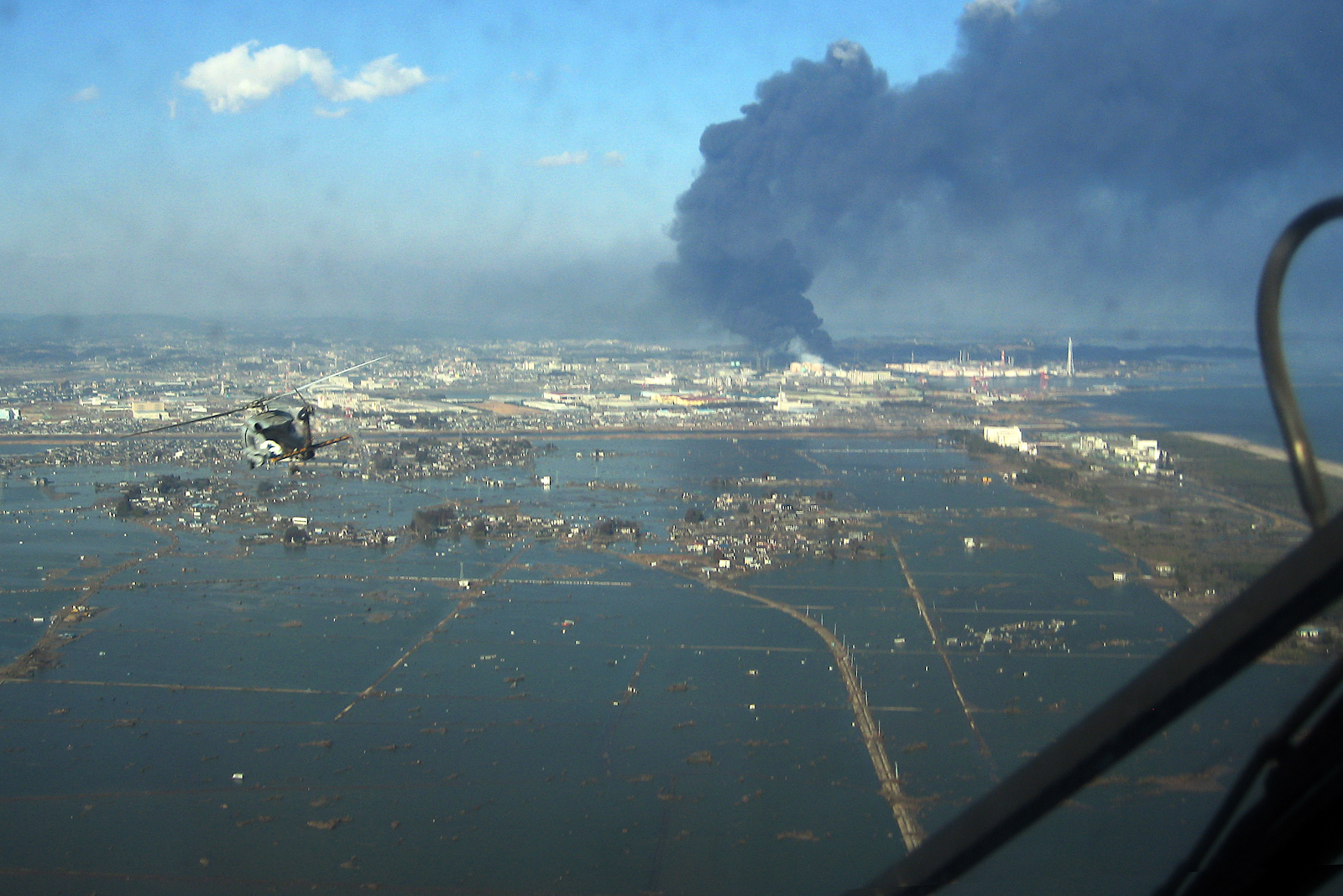
Consider the mental stress of being relocated, losing your job, your school, your neighbours, as well as the paralysing fear that you and your family have received a potentially fatal dose of radiation (otherwise, why were you evacuated?). As the relocation draws on, imagine the social dislocation this creates. In desperation, you might turn to drinking, smoking or drug abuse. You might start taking excessive risks because you think you’re doomed anyway, or perhaps you retreat into a shell and suffer from PTSD (post-traumatic stress disorder).
考虑搬迁,失去工作,学校,邻居的精神压力,以及对您和您的家人已经收到可能致命的辐射剂量的麻痹恐惧(否则,为什么要撤离?)。 随着搬迁的临近,想象一下由此造成的社会错位。 无奈之下,您可能会转向饮酒,吸烟或吸毒。 您可能会因为冒险而注定要冒险,或者因为您认为自己注定要失败,或者退缩了而遭受了PTSD(创伤后应激障碍)之苦。
All these effects were detected among Fukushima evacuees, as well as those relocated from around the Chernobyl nuclear accident. This begs the question: do such evacuations represent good policy? How do we know whether a mass evacuation is “worth it”? Are there alternatives?
所有这些影响都在福岛疏散人员以及切尔诺贝利核事故附近转移的人员中发现。 这就引出了一个问题:这种撤离代表良好的政策吗? 我们如何知道大规模疏散是否“值得”? 有其他选择吗?
应对核事故 (Coping with a nuclear accident)
It was with these questions in mind that Professor Philip Thomas of Bristol University started the NREFS project (Management of Nuclear Risk Issues: Environmental, Financial and Safety) in 2012, jointly funded by the UK Engineering and Physical Sciences Research Council (EPSRC) and the Atomic Energy Commission of India.
正是有了这些问题,记住,英国布里斯托尔大学的菲利普·托马斯教授开始NREFS项目(N个管理uclear [R ISK问题: 电子环境中的物体,F inancial和S afety)在2012年,由英国工程和物理科学研究理事会共同出资(EPSRC)和印度原子能委员会。
While accidents at nuclear plants are very rare, it is impossible to say that they will never occur. As Prof Thomas says, “I’ve often met with the reaction that we should make sure accidents don’t happen. And that’s fine. But accidents do happen, they have happened — and what do you do then?” The NREFS project sought to measure objectively the effectiveness of actions (usually referred to as ‘countermeasures’) a government could take following an accident, principally evacuation, sheltering (staying indoors for a period of hours to days), bans on the consumption of locally grown foods, remediation (cleaning of buildings and soils to remove contamination) and long-term relocation.
尽管核电厂的事故很少发生,但无法说它们永远不会发生。 正如托马斯教授所说:“我经常会遇到这样的React:我们应该确保不会发生事故。 很好。 但是事故确实发生了,它们已经发生了,那你该怎么办?” NREFS项目旨在客观地衡量政府在事故发生后可能采取的行动(通常称为“对策”)的有效性,主要是疏散,避难(在室内呆数小时至数天),禁止在当地消费种植的食物,修复(清洁建筑物和土壤以去除污染)和长期搬迁。

Believe it or not, no one had ever before measured — objectively — the effectiveness of such countermeasures, despite the huge social impact they incur. To do this, four independent strategies were developed by academics at Open University, University of Warwick, University of Manchester and City, University of London (Prof. Thomas moved from City to Bristol University during the project). The first strategy was to deploy a tool called the Judgement, or J-value.
信不信由你,尽管它们产生了巨大的社会影响,但从未有人客观地衡量过这种对策的有效性。 为此,开放大学,沃里克大学,曼彻斯特大学和伦敦大学城市学院的学者制定了四种独立的策略(在此项目中,托马斯教授从城市搬到布里斯托大学)。 第一个策略是部署一个称为“判断”或J值的工具。
Prof. Thomas developed the J-value in the 2000s to help engineers decide which safety systems provided the best value-for-money in terms of safety benefit. Most recently, the J-value has been used to assess the effectiveness of lockdown measures during the COVID-19 outbreak. The J-value builds on a widely-used economics indicator called the Life Quality Index, which is an ethical way to combine life expectancy at birth with gross domestic product (GDP) per person to determine how much money it makes sense to spend on reducing exposure to risk.
Thomas教授在2000年代开发了J值,以帮助工程师确定哪种安全系统在安全利益方面提供了最佳的性价比。 最近,J值已用于评估COVID-19爆发期间锁定措施的有效性。 J值建立在一种广泛使用的经济指标上,即生活质量指数 ( Life Quality Index) ,这是一种将出生时的预期寿命与人均国内生产总值(GDP)相结合的道德方法,以确定花多少钱减少暴露于风险中。
Unlike the United Nations’ Human Development Index (HDI), the Life Quality Index is derived rigorously from the economics of human welfare. As governments only have a limited amount of money to spend on all the services they provide, this means that there are not infinite funds to be spent responding to a nuclear accident; £1 spent on evacuating residents is £1 less that is spent on schools, hospitals and roads.
与联合国人类发展指数 (HDI)不同,生活质量指数是严格根据人类福利经济学得出的。 由于政府只能有限地花钱在其提供的所有服务上,因此这意味着没有无限的资金可用于应对核事故。 用于疏散居民的1英镑,比用于学校,医院和道路的开支少1英镑。
The J-value thus cleverly provides an objective way to measure whether countermeasures such as evacuations are “worth it”. It all gets a bit technical, but the J-value is measuring whether the gain in life expectancy afforded by a countermeasure like evacuation is worth the cost in £s to implement that measure.
因此,J值巧妙地提供了一种客观的方法来衡量撤离等对策是否“值得”。 这一切都有点技术性,但是J值正在衡量由疏散等对策提供的预期寿命的增加是否值得实施该措施的成本(以英镑为单位)。
As the J-value is a mathematically rigorous approach, economists and statisticians are able to pick apart the methodology and propose tweaks where they disagree. However, there have been no papers that refute NREFS’s findings. And almost uniquely for the social sciences, the NREFS team were able to empirically validate the J-value method by using it to predict life expectancy in 180 out of the 193 countries recognised by the United Nations.
由于J值是一种严格的数学方法,因此经济学家和统计学家可以区分该方法并提出不同意见的地方。 但是,还没有任何论文可以反驳NREFS的发现。 对于社会科学而言,几乎是独一无二的,NREFS团队能够通过使用J值方法预测联合国认可的193个国家中的180个国家中的预期寿命来对J值方法进行经验验证。
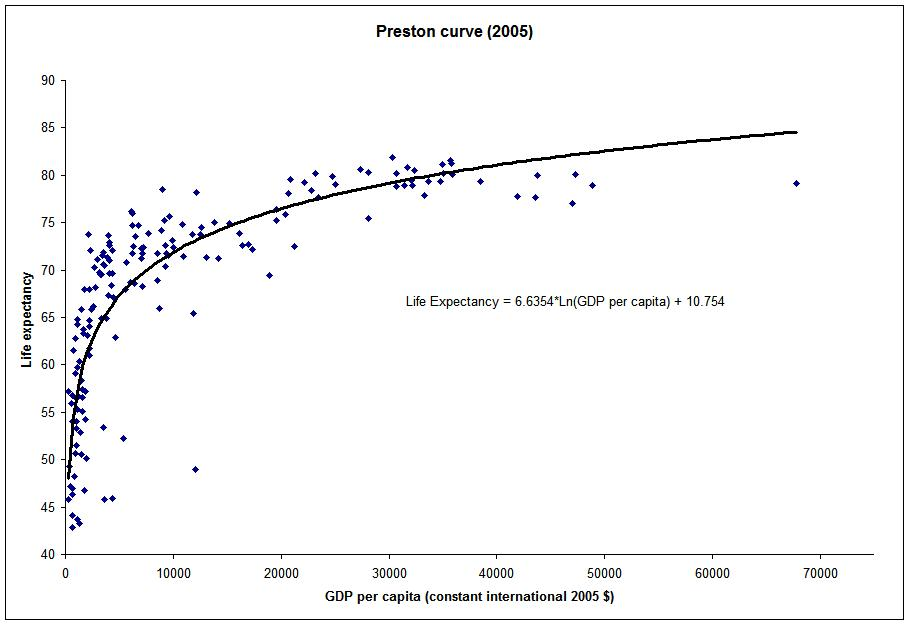
大惊喜 (The big surprise)
A massive 335,000 people were relocated after Chernobyl, never to return. For Fukushima Daiichi, around 111,000 people were forced to evacuate, with close to 50,000 following voluntarily; about 85,000 had not returned to their homes by 2015. Prof. Thomas and his team set about applying the J-value to both these accidents. What they discovered was so surprising that even they found the results hard to believe.
切尔诺贝利事故之后,有335,000人被重新安置,再也没有返回。 对于福岛第一核电站,约有111,000人被迫撤离,其中近50,000人被自愿撤离。 到2015年,约有85,000人尚未返回家园。Thomas教授及其团队着手将J值应用于这两次事故。 他们发现的结果令人惊讶,甚至连发现的结果也令人难以置信。
Chernobyl was pretty much the worst nuclear accident imaginable. Due to poor design and mismanagement, the reactor exploded, raining pieces of fuel into the nearby fields and setting alight graphite in the core.
切尔诺贝利几乎是可想象的最严重的核事故。 由于不良的设计和管理不善,React堆爆炸,使燃料碎片落入附近的田野,并在堆芯中放了石墨。
The J-value method suggested that for Chernobyl an evacuation was indeed a good idea. “We looked at Chernobyl,” says Prof. Thomas, “and we came to the conclusion that you would be looking to evacuate people once their loss of life expectancy was greater than 9 months.” As the area around Chernobyl was relatively poor and the cost of moving people was relatively high, the J-value says it would have been better for local people to stay put unless their loss of life expectancy from staying was greater than 9 months.
J值方法表明,切尔诺贝利撤离确实是个好主意。 “我们研究了切尔诺贝利,”托马斯教授说,“得出的结论是,一旦人们的预期寿命损失超过9个月,您将撤离人们。” 由于切尔诺贝利周围的地区相对贫困,搬迁的成本也相对较高,因此J值表示,如果当地居民的预期寿命损失不超过9个月,那么留住当地居民会更好。

Prof. Thomas continues, “Because we had quite extensive data on contamination levels on the various places around Chernobyl, we could work out how many people would be losing that amount of life expectancy. The answers we came back with surprised us.”
托马斯教授继续说:“由于我们拥有切尔诺贝利周围各个地方的大量污染水平数据,因此我们可以算出有多少人将失去这一预期寿命。 我们回来的答案使我们感到惊讶。”
The analysis showed that between 5 and 10 times too many people were moved away from the Chernobyl area between 1986 and 1990. The initial evacuation should have been limited to 31,000 people, instead of 116,000. The second evacuation in 1990 of 220,000 people was entirely unjustified, affording a gain in life expectancy of just 24 days.
分析表明,在1986年至1990年期间,有5到10倍的人被转移到切尔诺贝利地区。最初的撤离应该限制为31,000人,而不是116,000人。 1990年第二次撤离220,000人是完全没有道理的,预期寿命仅增加了24天。
The surprising results don’t arise from some new, slap-dash way of measuring risk from radiation. The methodology uses approaches recommended by various United Nations committees, including the “Linear No Threshold” model for low doses of radiation, which some radiation experts believe overestimates the risk of a small amount of radiation. “The evacuation was very effective in reducing the dose and increasing life expectancy,” says Prof. Thomas, “but we found that it was well over the top.”
出人意料的结果并非来自一些新的,以飞快的方式测量辐射风险的方法。 该方法采用了联合国各个委员会建议的方法,包括针对低剂量辐射的“线性无阈值”模型,一些辐射专家认为该模型高估了少量辐射的风险。 “疏散是减少剂量和延长预期寿命是非常有效的,”托马斯教授说,“但我们发现,这是很好过顶。”
As for measuring the costs of evacuation, “We were very conservative about this,” says Prof. Thomas, “we looked purely at the cost of relocation, and didn’t factor in the economic, social and health costs of the disruption caused by evacuation.” If such effects were factored in, he says, this would reduce the recommended number of evacuees even further.
关于衡量疏散成本,“我们对此非常保守,”托马斯教授说,“我们纯粹是考虑搬迁成本,而没有考虑到因疏散而造成的经济,社会和健康成本疏散。” 他说,如果考虑到这种影响,这将进一步减少建议的撤离人员数量。
Prof. Thomas fears that as well as the Chernobyl relocations being far too large in scale, those that were relocated, many of whom received government pensions as accident victims, suffered psychological effects for many years: “A lot of the people evacuated thought, ‘If the government is spending this amount of money on me, I must have suffered something truly dreadful.’ I think there has been enormous psychological damage, which has led to loss of life expectancy in itself.” If such negative effects were accounted for this would also strengthen the argument for no evacuation, or at least only a short, temporary one, Prof. Thomas adds.
托马斯教授担心,切尔诺贝利搬迁规模太大,而且搬迁的居民(其中许多人作为事故受害者获得了政府养老金)多年来遭受了心理影响:“许多人撤离了思想,”如果政府把这笔钱花在我身上,那我一定遭受了真正可怕的事情。” 我认为已经遭受了巨大的心理伤害,这本身导致了预期寿命的损失。” 托马斯教授补充说,如果考虑到这种负面影响,这也将加强不撤离或至少是短暂的临时撤离的论点。
So what about Fukushima, where residents affected by the meltdowns were also living in a tsunami disaster zone? The authors found it difficult to justify moving anyone on grounds of the risk from radiation. The average loss of life expectancy from radiation if everyone had stayed put was found to be 19 days.
那么福岛怎么办呢?在福岛,受灾难影响的居民也住在海啸灾区? 作者发现很难以辐射风险为由来移动任何人。 如果每个人都呆在原地,辐射导致的平均预期寿命损失为19天。
Prof. Thomas explains that “for the worst-affected town, Tomioka, the loss of life expectancy there would have been less than 3 months, and they shouldn’t have been evacuated at all,” although he noted temporary evacuation may well have been necessary for some due to tsunami and earthquake damage.
托马斯教授解释说:“对于受影响最严重的小镇富冈市,预期寿命的损失将少于3个月,根本不应该撤离,”他指出,临时疏散很可能已经对于某些由于海啸和地震造成的伤害是必需的。
To put that in context, the two and a half month loss in life expectancy in Tomioka would have been less than the four and a half months loss of life expectancy experienced by all Londoners due to air pollution.
综上所述,富冈市两个半月的预期寿命损失要少于所有伦敦人由于空气污染而遭受的四个半月预期寿命损失。
Sadly, of the 160,000 people evacuated due to radiation fears, there were 1,121 deaths in the first 3 years from physical and mental exhaustion. This translates to an average loss of life expectancy due to being evacuated of 37 days, which is more than the loss of life expectancy people would have incurred by staying put.
令人遗憾的是,由于担心受到辐射而被疏散的160,000人中,头3年因身心疲惫而死亡1,121人。 这意味着撤离 37天后平均预期寿命损失,这比人们留在原地而造成的预期寿命损失还要多。
One interesting finding was that remediation, i.e. the cleaning and decontaminating of urban and agricultural areas, was found to be very good value-for-money. Food bans were also found to be effective.
一个有趣的发现是,补救措施,即对城市和农业地区的清洁和净化,被认为是非常物有所值的。 食品禁令也被发现是有效的。
The J-value was just one aspect of NREFS. Mathematicians at the University of Manchester performed an independent economic analysis looking at hundreds of potential nuclear accidents around the world. Prof. Thomas explains they concluded that “in very few cases was it sensible to relocate anyone permanently [following an accident]. In some cases it might be an idea to move people out temporarily, for a month or so, look at remediation and other things, but to get them back home.”
J值只是NREFS的一个方面。 曼彻斯特大学的数学家进行了一项独立的经济分析,着眼于全球数百起潜在的核事故。 托马斯教授解释说,他们得出的结论是:“在极少数情况下,[在发生事故后]永久性地安置任何人是明智的。 在某些情况下,将人们暂时搬出一个月左右,研究补救措施和其他方法,然后将他们带回家可能是个好主意。”
A third approach managed by the Open University and Public Health England (the public body in the UK responsible for human health issues, including those related to radiation) used the latest computer modelling tools to predict what would happen if there were an accident at a fictional nuclear reactor on the English South Downs. “[The researchers] came to the conclusion that, on average, long-term relocation would be limited to around 600 people,” says Prof. Thomas.
由英国公开大学和公共卫生(英国负责人体健康问题的公共机构,包括与辐射有关的公共机构)管理的第三种方法,是使用最新的计算机建模工具来预测如果虚构事故发生时会发生什么情况英国南部丘陵地区的核React堆。 “(研究人员)得出的结论是,平均而言,长期搬迁将限制在600人左右,” Thomas教授说。
The only rebuttal to NREFS’s findings was in the form of a letter from a group of history and communications academics (Kasperski et al.) who questioned the J-value methodology, as well as some of the NREFS team’s assumptions. Prof. Thomas believes that their reply addressed all of the points raised in the letter.
唯一的反驳NREFS的发现是在一个形式信从一组历史和通信学者谁质疑J-值的方法,以及一些NREFS球队的假设(Kasperski等)。 托马斯教授认为,他们的答复解决了信函中提出的所有问题。
突破性的成果 (Ground-breaking results)
NREFS surprised everyone. Even the authors found it hard to believe what the numbers were telling them. The results seem to fly in the face of everything society assumes about the risk of nuclear accidents.
NREFS使所有人感到惊讶。 即使是作者,也很难相信这些数字告诉了他们什么。 面对社会关于核事故风险的一切假设,结果似乎不成立。
The papers were published in a special issue of Process Safety and Environmental Protection in December 2017. At close to 40,000 downloads, it’s among the top 5 downloaded issues of all time. Prof. Thomas and his team were invited to present their findings at the UK All-party Parliamentary Group for Nuclear Energy, as well as at the US Federal Emergency Management Agency, the American Nuclear Society, an Anglo-French cooperation event at the British Embassy in Paris, and many international conferences on radiation protection.
这些论文于2017年12月在《 过程安全与环境保护》 特刊上发表。下载量接近40,000,是有史以来下载量排名前5的刊物之一。 托马斯教授及其团队应邀在英国核能全党国会议员小组以及美国联邦紧急事务管理局,美国核能学会在英国大使馆举行的英法合作活动中介绍了他们的发现。在巴黎以及许多辐射防护国际会议上。
In Japan, where the NREFS findings are perhaps most sensitive, the response was overwhelmingly positive. Prof. Thomas was invited to speak at Fukushima Medical University and Hiroshima University, and has even been awarded a Japan Society for the Promotion of Science International Fellowship for 2020, which will see him work with local universities on remediation at Fukushima.
在日本,NREFS的发现可能是最敏感的,其React绝大多数是积极的。 托马斯教授应邀在福岛医科大学和广岛大学演讲,甚至还获得了2020年日本科学促进协会国际奖学金,这将使他与福岛当地大学合作进行补救。
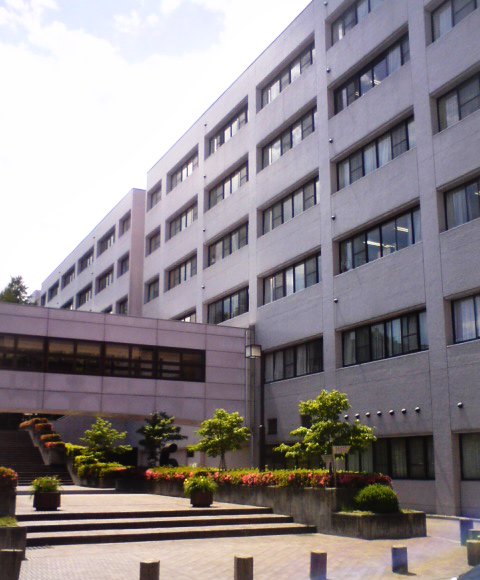
“One of the things we’re keen to avoid is putting any blame on Japanese authorities,” says Prof. Thomas. “No one has experience of this, we’ve only had one big nuclear accident [before Fukushima], and they more or less copied the mass evacuations that happened at Chernobyl. They didn’t have the benefit of our work — no one knew better at the time. The key thing is that anything that happens from now on needs to bear [our findings] in mind.”
托马斯教授说:“我们渴望避免的事情之一是将一切归咎于日本当局。” “没有人对此有经验,在福岛之前,我们仅发生过一次大核事故,而他们或多或少地复制了切尔诺贝利发生的大规模撤离。 他们没有从我们的工作中受益-当时没人知道。 关键是, 从 现在开始发生的任何事情都需要牢记[我们的发现]。”
Scientists at Fukushima Medical University and Hiroshima University have independently reached the same conclusions as the NREFS project: that the scale and duration of the Fukushima relocations cannot be justified based on the risk from radiation. They also looked at public perception of the severity of the accident and found that the further away from Fukushima Daiichi you lived, the worse you believed the accident to have been.
福岛医科大学和广岛大学的科学家独立地得出了与NREFS项目相同的结论:福岛搬迁的规模和持续时间不能根据辐射风险来证明。 他们还研究了公众对事故严重性的认识,发现您所居住的福岛第一核电站距离越远,您对事故的怀疑就越严重。
核成为媒体关注的焦点 (Nuclear in the media spotlight)
For an academic project, NREFS received significant media coverage. The project’s launch was covered by The Times (of London) newspaper, with follow-up pieces from the Financial Times, among others. Amusingly, The London Evening Standard picked up on the London air pollution statistic and turned it on its head: “Living in London ‘poses same risk to health as living in nuclear fallout zone’”, read the headline. The story went viral.
对于一个学术项目,NREFS获得了大量媒体报道。 《伦敦时报》 ( The Times )报道了该项目的启动,以及《 金融时报》的后续报道 。 有趣的是,《伦敦晚间标准》采纳了伦敦的空气污染统计数据,转而动了脑筋:“在伦敦生活'对健康的危害与在核辐射区生活的危害相同'”, 标题读到 。 这个故事广为流传。
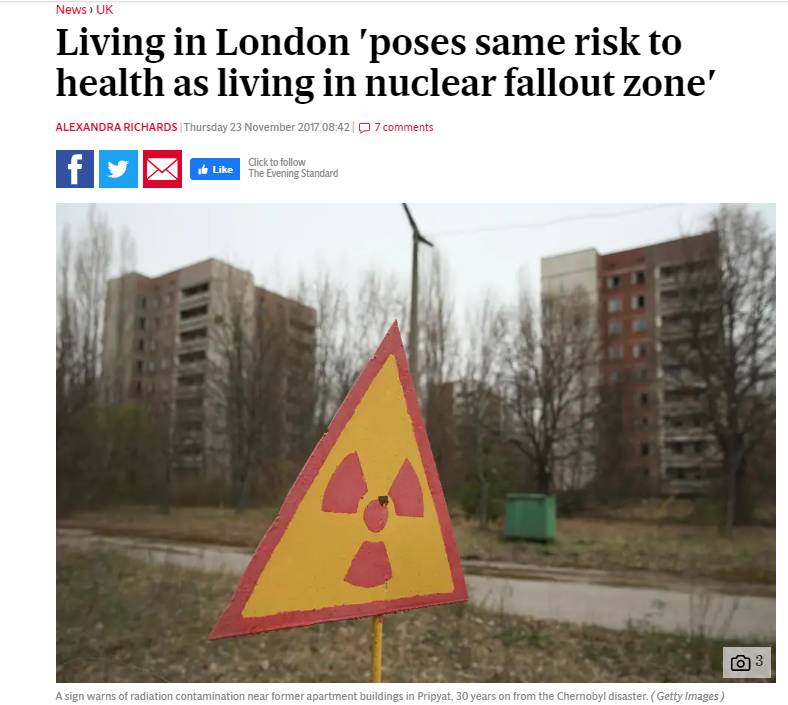
The headline sums up the difficulty Prof Thomas and co. faced: most people’s starting point is that nuclear is dangerous. If air pollution in London poses more risk than living in a nuclear accident zone, it must be that air pollution is incredibly damaging rather than that radiation is less scary than we thought, so the thinking goes.
标题概括了托马斯教授及其同事的困难。 面临:大多数人的出发点是核是危险的。 如果伦敦的空气污染比生活在核事故区带来更大的风险,那一定是空气污染具有令人难以置信的破坏力,而不是辐射没有我们想像的那么可怕,所以想法就这样了。
Prof. Thomas thinks most people simply find it hard to believe that the group’s findings can possibly be true. This includes the nuclear industry itself, which as an academic Prof. Thomas is keen to distance himself from.
托马斯教授认为,大多数人很难相信该小组的调查结果可能是真实的。 这包括核工业本身,作为一名学者Thomas教授渴望与之远离。
“The nuclear industry has been losing the argument for the last forty years, ever since Three Mile Island,” he says, “and now can’t quite believe the good news [that the main issue which has dogged them for so long may be less serious than was feared]”. Prof. Thomas insists that “if you do have a nuclear accident, a big nuclear accident, a massive nuclear accident, then you shouldn’t panic. The consequences are far less than people have feared.”
他说:“自三哩岛(Triple Mile Island)以来,核工业在过去的40年中一直在争论不休,现在他还不能完全相信好消息[长期困扰他们的主要问题可能是不如所担心的那么严重]”。 托马斯教授坚持认为:“如果您确实发生了核事故,大核事故, 大规模核事故,那么您就不必惊慌。 其后果远不如人们所担心的那样。”
我们是否了解到NREFS提供的课程? (Have we learned the lesson NREFS provides?)
Despite the apparently broad interest and ground-breaking findings, Prof. Thomas believes that almost no country is seriously rethinking how to deal with nuclear accidents. He believes if there were a nuclear accident tomorrow then a lot of the mistakes from Fukushima and Chernobyl would be repeated.
尽管有广泛的兴趣和开创性的发现,托马斯教授相信几乎没有哪个国家在认真考虑如何处理核事故。 他认为,如果明天发生核事故,那么福岛和切尔诺贝利的许多错误将重演。
“We have actually met quite a lot of resistance from the UK Health & Safety Executive (HSE) and the Office for Nuclear Regulation (ONR),” he says. Although someone within ONR made reference to the NREFS results as part of a report on the mothballed Hitachi-GE Wylfa Newydd project, ONR have not formally sought Prof. Thomas’s advice on the subject.
他说:“实际上,我们遭到了英国健康与安全执行官(HSE)和核监管办公室(ONR)的强烈反对。” 尽管ONR内部有人引用了NREFS结果作为关于日立GE Wylfa Newydd项目的报告的一部分,但ONR尚未就此问题正式征求Thomas的建议。
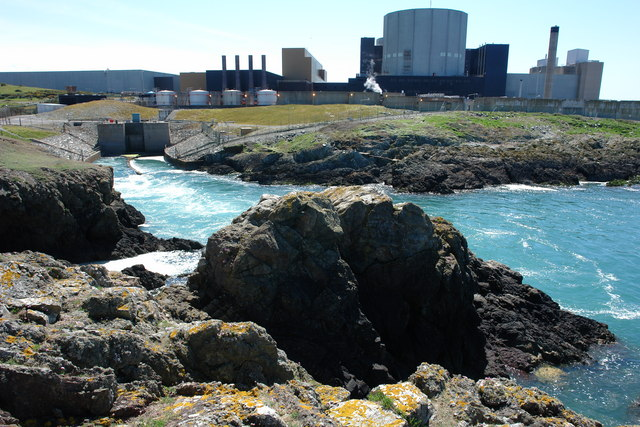
Prof. Thomas gave a short lecture to the HSE and had a meeting with the UK government department responsible for nuclear (Department of Business, Energy and Industrial Strategy, BEIS), which he says seemed to go well. However, there was no follow-up from BEIS, and neither he nor his team have been invited to advise the UK government directly on its Emergency Preparedness and Response guidelines.
托马斯教授对HSE作了简短的演讲,并与负责核问题的英国政府部门(商业,能源和工业战略部,BEIS)举行了会议,他说这进展顺利。 但是,BEIS没有后续行动,也没有邀请他和他的团队直接向英国政府提供有关其应急准备和响应准则的建议。
When questioned on this, a BEIS spokesperson said that “We considered Prof. Thomas’ response to a public consultation in October-November 2017 on revising our Emergency Preparedness and Response (EP&R) arrangements for radiological sites. Consultation responses helped to shape and finalise our final policy positions. The REPPIR 2019 regulations that were introduced as a result provide a single set of updated EP&R requirements at radiological sites across multiple sectors. Our proposals received broad support from respondents.” However, the government’s response to that consultation did not address Prof Thomas’ comments relating to the use of prescriptive exclusion zones, or those highlighting the dangers of mass relocations based on experience from Chernobyl and Fukushima.
当被问到这一问题时,BEIS发言人说:“我们考虑了托马斯教授在2017年10月至11月进行的一次公众咨询 ,以修订我们的放射现场应急准备和响应(EP&R)安排。 咨询回应有助于塑造并最终确定我们的最终政策立场。 结果引入的REPPIR 2019法规在多个部门的放射现场提供了一套最新的EP&R要求。 我们的建议得到了受访者的广泛支持。” 但是,政府对磋商的回应并未解决托马斯教授关于使用规定性禁区的评论,也没有根据切尔诺贝利和福岛的经验强调大规模搬迁的危险。
Although the ONR and Public Health England (who advise the government on public health issues) did not respond to our request for comment, the approved code of practice developed by ONR to support the implementation of REPPIR 2019 does encourage that “protection strategies should be optimised and require a balance to be struck between the expected benefits and detriments of introducing particular protective actions.”
尽管ONR和英格兰公共卫生局(他们就公共卫生问题向政府提供建议)未回应我们的置评请求,但ONR为支持REPPIR 2019的实施而制定的批准的行为准则确实鼓励``应优化保护策略并要求在采取特定保护措施的预期收益与危害之间取得平衡。”
However, Prof. Philips believes the guidance from government is not strong enough: “The presumption should be that we don’t carry out massive relocations, and any evacuations that do take place should be fairly limited and temporary.”
但是,菲利普斯教授认为,政府的指导还不够强大:“推定应该是我们不进行大规模的搬迁,而撤离的发生应该是相当有限和暂时的。”
J值作为实时风险监控的工具 (J-value as tool for real-time risk-monitoring)
Perhaps there has been limited government interest because the J-value is not much use if we can only apply it some months or years after an accident. For J-value to be really useful it has to be available on-demand to incident controllers during an accident. To this end, Prof. Thomas is working with the Indian authorities to augment their online nuclear emergency response system, known as ONERS.
也许政府的兴趣有限,因为如果我们仅在事故发生后的几个月或几年内应用J值,那么J值就不会有太大用处。 为了使J值真正有用,必须在事故期间按需将其提供给事件控制器。 为此,托马斯教授正在与印度当局合作,以扩大其在线核应急系统,即ONERS。

Using the J-value, weather data and real-time radiation levels collected by swarms of drones and autonomous vehicles, ONERS could provide residents around a nuclear plant with real-time risk data during an accident via an app on their phone. As evidence shows people intuitively understand life expectancy, the risk would be displayed as the likely loss of life expectancy from the accident, including J-values for countermeasures like sheltering or evacuating.
利用由无人机和自动驾驶汽车群收集的J值,天气数据和实时辐射水平,ONERS可以通过手机上的应用程序在事故发生时向核电站附近的居民提供实时风险数据。 正如证据表明人们直观地了解预期寿命,该风险将显示为事故可能造成的预期寿命损失,包括用于避难或撤离等对策的J值。
In fact, Prof. Thomas “would like to see this app being accessible every day of the year. People all over the world have smartphones, and they could see daily the risk the plant is posing to them.” There has been real interest in the project from India, Japan and the US, but so far none from the UK or EU. “It’s disappointing that the UK has not shown more interest,” he says, “it would be great if we had strong support for future research.”
实际上,Thomas教授“希望看到该应用每年一年中的每一天都可以访问。 世界各地的人们都拥有智能手机,他们每天都可以看到工厂对他们构成的风险。” 印度,日本和美国对该项目引起了真正的兴趣,但迄今为止,英国或欧盟都没有兴趣。 他说:“令人失望的是,英国没有表现出更多的兴趣,如果我们对未来的研究给予大力支持,那就太好了。”

The beauty of the J-value is that it is both objective and auditable. As the method has a mathematical basis, decision-makers using J-value are then able to defend their decisions after the fact. This could alleviate some of the enormous pressure placed on decision-makers during a nuclear accident, and avoid the overconservative thinking we saw at Fukushima and Chernobyl, as well as the unnecessary evacuation deaths this led to.
J值的优点在于它既客观 又可审计 。 由于该方法具有数学基础,因此使用J值的决策者可以在事实发生后捍卫自己的决策。 这可以减轻核事故期间决策者承受的巨大压力,并避免我们在福岛和切尔诺贝利看到的过分保守的思想以及由此导致的不必要的疏散死亡。
担心辐射的危险 (The danger of fearing radiation)
Our fear of nuclear has slowed the expansion of new nuclear power. This means more fossil fuels, more air pollution (which kills 7 million people a year), more global warming, more habitat destruction. This fear is dangerous stuff.
我们对核电的恐惧减缓了新核电的发展。 这意味着更多的化石燃料,更多的空气污染(每年造成700万人死亡 ),更多的全球变暖,更多的栖息地破坏。 这种恐惧是危险的东西。

As the climate science website Carbon Brief puts it, “[Following the Fukushima Daiichi accident], Japan quickly cut back on its use of nuclear energy and by 2013 it had shuttered all its nuclear plants. A large expansion of gas and oil provided the missing power.”
正如气候科学网站Carbon Brief所说:“ [在福岛第一核电站事故之后],日本Swift削减了对核能的使用,到2013年,日本已经关闭了所有核电站。 天然气和石油的大量膨胀提供了缺失的动力。”
Responding in a proportionate way to nuclear accidents affects the whole planet through carbon emissions and air pollution. In fact, research from leading climate scientists suggested that if Japan and Germany had reduced coal instead of nuclear after Fukushima, they could have together prevented about 28,000 air pollution-induced premature deaths and 2.6 billion tons of CO2 emissions between 2011 and 2017.
对核事故采取相应的React,会通过碳排放和空气污染影响整个地球。 实际上, 来自领先气候科学家的研究 表明,如果日本和德国在福岛核电站之后减少了煤炭的使用,而不是减少了核能,那么在2011年至2017年之间,它们本可以避免约28,000例因空气污染引起的过早死亡和26亿吨CO2排放。
Our understanding of nuclear accident risk may also influence the success or otherwise of next-generation advanced nuclear reactors, many of which aspire to be co-located with industry or urban areas. Currently, nuclear plants are mostly sited far away from population centres due to safety fears. The work of Prof. Thomas and his team suggests we should at least re-evaluate this policy.
我们对核事故风险的理解也可能影响下一代先进核React堆的成败,否则,它们中的许多渴望与工业或城市地区并置。 当前,出于对安全的担忧,核电站大多位于远离人口中心的位置。 托马斯教授及其团队的工作表明,我们至少应该重新评估这项政策。
核电的未来会怎样? (What does the future hold for nuclear?)
Prof. Thomas’s team did not have an agenda: “the results were a surprise to everyone on the project team”, he says. “But when we take a step back…if our results are correct then we must change the way we perceive nuclear power.”
托马斯教授的团队没有议程:“结果令项目团队中的每个人都感到惊讶”。 “但是当我们退后一步……如果我们的结果正确,那么我们就必须改变我们对核电的认识。”
So, what is the truth about the risk of nuclear? “The public is always asking of nuclear, ‘what if it all goes wrong?’ Now, for the first time ever, we have an answer, and it’s quite an encouraging answer at that.”
那么,关于核风险的真相是什么? “公众一直在问核电,如果一切都出错了?” 现在,这是有史以来第一次,这是一个令人鼓舞的答案。”
As you read this we could well be sleepwalking into another nuclear public health disaster. If there was a meltdown tomorrow in the UK, France, US or elsewhere, it’s likely that our failure to adjust our thinking in light of the experiences at Fukushima and Chernobyl would mean we evacuate too many people for too long. People would die as a result.
当您阅读本文时,我们很可能梦游于另一场核公共卫生灾难。 如果明天在英国,法国,美国或其他地方发生崩溃,我们可能无法根据福岛和切尔诺贝利的经验来调整思维,这意味着我们将太多人疏散了太长时间。 结果人们会死。
“If Japan and Germany had reduced coal instead of nuclear after Fukushima, they could have together prevented about 28,000 air pollution-induced premature deaths.”
“如果日本和德国在福岛核事故后减少煤炭而不是核能,它们本来可以避免约28,000例空气污染引起的过早死亡。”
Revisiting our assumptions about nuclear accidents will not be easy, but we have to try. Everyone has an interest in doing so. Government and regulators have an interest, because evidence from Japan shows that overreacting could be fatal. The nuclear industry has an interest, because a single badly-handled nuclear incident would cause the complete shutdown of the sector, just as happened in Japan. The public has an interest, because on a planet already overwhelmed with fossil fuels and habitat destruction, a billion people still lack access to electricity. Rediscovering nuclear as a safe energy source, as well as a green and affordable one, would be revolutionary.
重新审视我们对核事故的假设并非易事,但我们必须尝试。 每个人都对此感兴趣。 政府和监管机构对此很感兴趣,因为日本的证据表明,React过度可能是致命的。 核工业很感兴趣,因为一次处理不善的核事故将导致该部门完全关闭,就像日本那样。 公众有兴趣,因为在一个已经化石燃料和生境破坏不堪重负的星球上,十亿人仍然无法获得电力。 重新发现核能作为一种安全的能源,以及一种绿色和可负担的能源,将是革命性的。
This article was originally published in the UK Nuclear Institute’s Nuclear Future magazine in July 2020.
本文最初 于2020年7月 发表在英国核研究所的《 核未来 》杂志上。
你应该了解真相





















 1707
1707











 被折叠的 条评论
为什么被折叠?
被折叠的 条评论
为什么被折叠?








